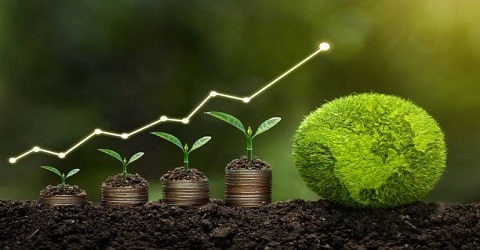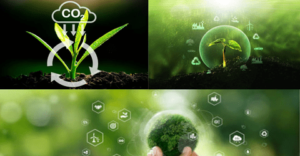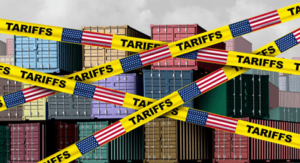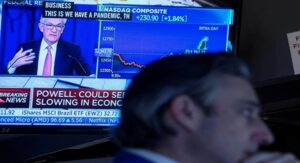
The Role of Green Growth Averting Climate Change
The role of green growth averting climate change lies at the heart of a nuanced debate surrounding sustainability and prosperity. While efficiency improvements offer tangible benefits, the emphasis on sufficiency and degrowth presents a thought-provoking paradigm shift. The COVID-19 pandemic underscored the environmental benefits of reduced consumption, yet transitioning to a degrowth model faces practical challenges, particularly in wealthier nations.
Despite this, the imperative remains clear: decarbonization necessitates a multifaceted approach, blending efficiency gains with technological innovation and strategic policy interventions. Ultimately, achieving climate resilience demands not just a reevaluation of growth paradigms, but a concerted effort to harness economic expansion as a force for environmental stewardship and collective well-being.
Role of Green Growth Averting Climate Change
In the ongoing discourse surrounding climate change mitigation, the concept of economic growth often finds itself at odds with environmental preservation. However, a closer examination reveals that economic growth, particularly through improved energy efficiency, is not only compatible with but essential for addressing the climate crisis.
This article delves into the intricate relationship between economic growth and climate action, debunking misconceptions and highlighting the crucial role that growth plays in averting catastrophic climate change.
Read More: How Rising Geopolitical Risks Threaten Global Sustainability
Table of Contents
1. Distinction Between Efficiency and Sufficiency
The distinction between energy efficiency and sufficiency, the limiting energy consumption in alignment with the degrowth movement, advocating for reduced economic activity to combat climate change, and the role of green growth averting climate change. It stresses the importance of doing more with less, a concept pivotal in sufficiency.
Unlike energy efficiency, which focuses on improving energy use, sufficiency prioritizes reducing overall consumption. This nuanced approach resonates with the ethos of sustainability and underscores the necessity for holistic strategies in addressing climate challenges, emphasizing quality of life over sheer quantity of consumption.
2. Degrowth and Climate Goals
The emergence of degrowth as a potential solution to climate change, particularly noted during the COVID-19 pandemic’s lockdowns, has raised awareness about the role of green growth averting climate change. These periods led to a temporary reduction in global carbon emissions, prompting attention to the concept.
Additionally, concerns over energy security, spurred by geopolitical events like Russia’s invasion of Ukraine, have fueled interest in alternative economic models. Advocates propose that embracing minimalism in consumerist societies could foster environmental sustainability and enhance human welfare. They advocate for wealthy nations to curtail economic growth while acknowledging the need for increased consumption in poorer countries to uplift living standards.
Read More: Collective Climate Actions: The Urgency of Global Collaboration
3. Challenges of Degrowth
The notion of degrowth, touted as a climate solution, confronts formidable hurdles, especially in light of the role of green growth averting climate change outcomes. It demands not merely a shift in consumption habits but a stark decrease. Historical transitions like the shift from cars to bicycles align more with green growth than degrowth principles.
While embracing a slower pace and lower income might offer personal contentment, it falls short as a holistic remedy for the climate crisis. The challenges lie in the necessity for absolute consumption reduction and distinguishing between surface-level green strategies and the deeper restructuring required by degrowth ideals.
4. Thought Experiment on Decarbonization
In a hypothetical scenario of a stable global economy with no growth or decline, the role of green growth averting climate change events is crucial. A consistent annual decarbonization rate of 2.4% could lead to a significant reduction in global CO2 emissions by 2050, slashing them by 48%. This would signify a remarkable leap in carbon efficiency, almost doubling the current state.
However, achieving such a feat solely through reduced economic activity would necessitate an unrealistic annual global GDP shrinkage of 5% for three decades. This proposition becomes even more untenable considering the recent global economic downturn of 2.7% during the 2020 pandemic, highlighting the impracticality of solely relying on economic contraction for emissions reduction.
Read More: IMF’s Commitment to Paris Agreement: A Critical Step Towards Climate Action
5. Degrowth in Rich Countries
Advocates suggesting restricting degrowth to affluent nations face daunting challenges. However, proponents argue that the role of green growth averting climate change cannot be overlooked. Implementing this strategy would require G7 countries to slash their economic output by 17% in 2024, followed by ongoing annual reductions akin to the Great Depression era.
By 2030, their purchasing power would mirror that of present-day South Sudan, an unsettling prospect for Western consumers. This proposition entails severe economic ramifications and societal implications, rendering it impractical and unpalatable to affluent nations accustomed to high standards of living.
6. Economic Growth and CO2 Emissions
In the last twenty years, global per capita GDP surged by 6.8% annually, paralleled by a spike in CO2 emissions. The role of green growth averting climate change events becomes increasingly evident in this context. The shift towards net-zero emissions necessitates a transformative shift towards clean energy and substantial investments in green technologies.
Contrary to assumptions, this transition won’t impede economic growth but rather propel it forward. Economic expansion becomes imperative in funding the transition to a low-carbon economy, establishing a symbiotic relationship between economic growth and environmental sustainability.
Read More: How Guyana’s Sustainable Economic Model is Transforming Latin America
7. Energy Efficiency and Economic Productivity
Enhancing energy efficiency proves pivotal, evidenced by the 2007 US legislation’s success in transitioning from incandescent bulbs, yielding financial benefits and emission reductions. McKinsey’s 2010 report underscores these gains. Extensive efficiency enhancements bolster economic vitality, driving productivity and fostering development. The role of green growth averting climate change becomes increasingly evident in this context.
Urgent decarbonization necessitates swift adoption of sustainable technologies, requiring robust economic expansion to avert climate crisis. While economic growth isn’t the primary objective, it emerges as a consequence of successful emission mitigation tactics, emphasizing the symbiotic relationship between environmental stewardship and economic prosperity.
Read More: Unlocking Amazon Conservation Beyond Bioeconomy: A Critical Examination
Bottom Line
Improving energy efficiency and embracing sufficiency are both important, but they should not be conflated. While degrowth presents an appealing theoretical solution, its practical implications reveal significant drawbacks. A balanced approach, combining efficiency improvements, the role of green growth averting climate change events, and sustainable economic growth, is essential for effectively addressing climate change.
Achieving net-zero emissions requires substantial investment and innovation, underscoring the need for growth-driven strategies to foster a sustainable and prosperous future.







